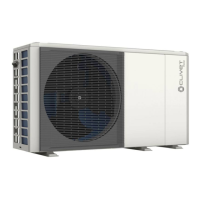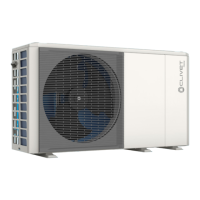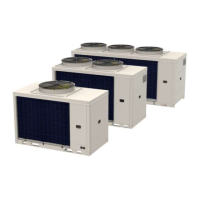40
Water connections
6.4 Water circuit frost protection
The unit is designed to be installed outdoors and can therefore be exposed to sub-zero temperatures: it is
necessary to prevent ice from forming in the water circuit, which can cause serious damage.
W
CAUTION
Damage from freezing is not covered by the warranty.
If the unit is not started for a long time, make sure it remains powered and on stand-by.
When the unit is on stand-by, the software uses special functions that activate the heat pump to protect the
whole system from freezing. When the temperature of the water in the circuit falls below a certain value, the
unit will heat the water by activating the circulation or the additional electric heater. The freeze protection
function is only disabled when the temperature rises above a threshold that does not pose any risks to the
system.
In the event of a blackout or power failure, the above freeze protection functions cannot be activated. For
applications where there is a risk of freezing, it is advisable to provide an antifreeze liquid or an automatic
frost protection valve to be fitted in the water circuit. It is advisable to opt for the solution proposed by the
supplier and to pay attention to the accessory’s manual.
Fig. 33
W
CAUTION
If the power supply has to be disconnected, the water in the circuit must be completely drained so that the
unit and pipes are not damaged by freezing. Do not restart the unit if there is no water in the circuit.
To protect the unit from icing up:
• protect the pipes: all the internal parts of the unit's water circuit are insulated to reduce heat loss; insulation
must also be provided for the pipes to be installed on site. It is advisable to provide pipes with heating
cables placed underneath the insulation.
6.4.1 Using an antifreeze liquid
The recommended antifreeze fluid is glycol, which, depending on its concentration in the water, can lower
the freezing temperature.
A generic system can use ethylene glycol or propylene glycol (category III according to EN1717, with inhibitors),
while systems with DHW storage tank require only propylene glycol.
The presence of glycol in the system may make it necessary to install an additional expansion tank. Take this
into account in installation assessments.
Depending on the minimum expected outdoor temperature, put a concentration of glycol into the water
circuit as per the table below.
The use of glycol changes performance of the unit: the operating performance can be estimated by
multiplying the correction factors by the nominal operating values.

